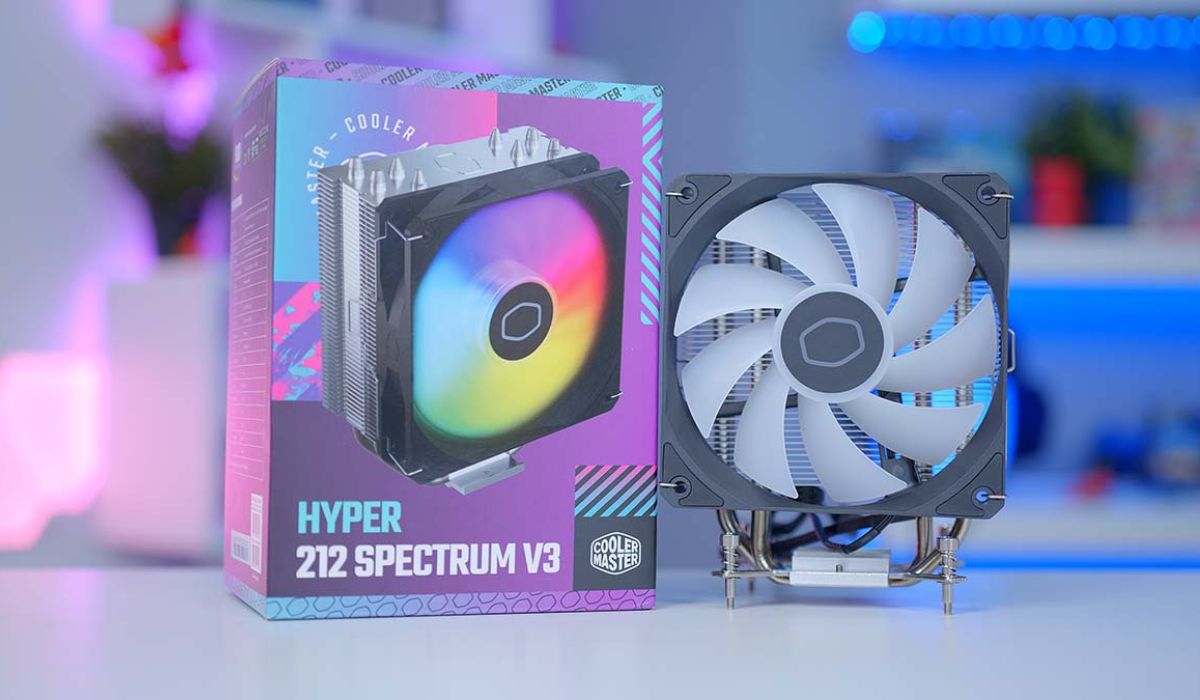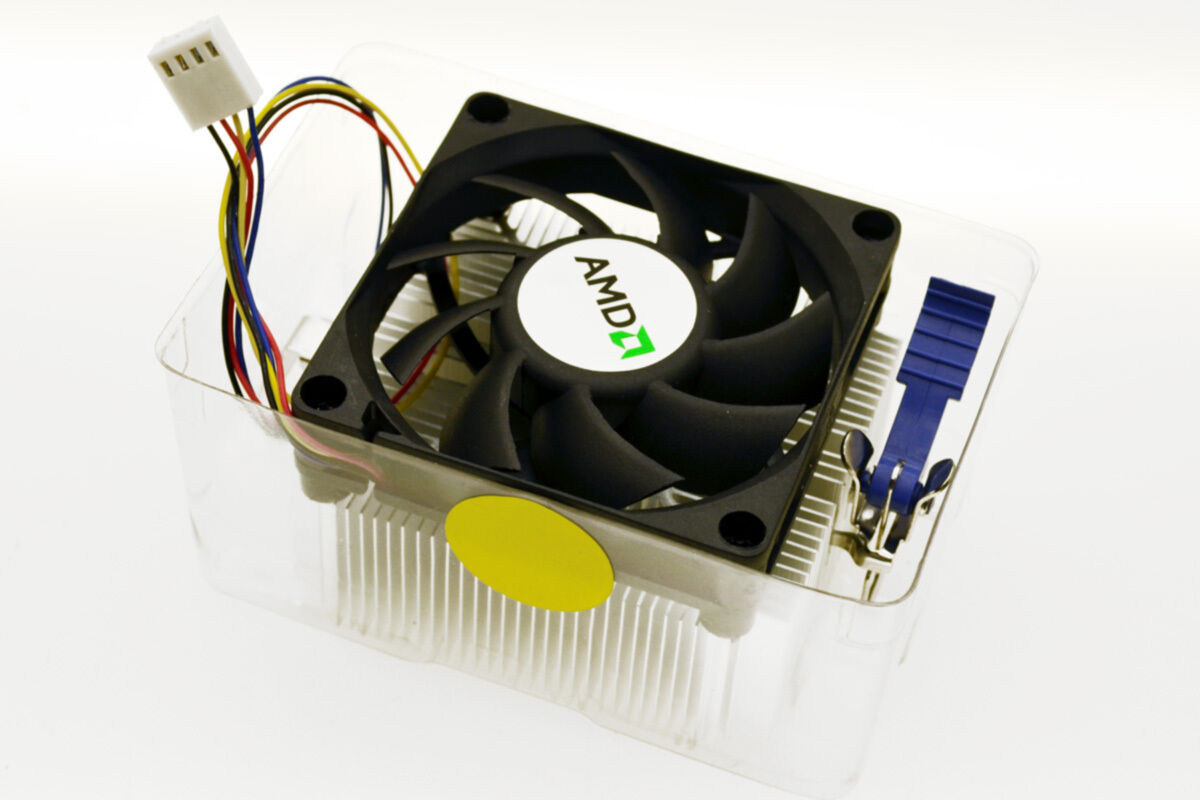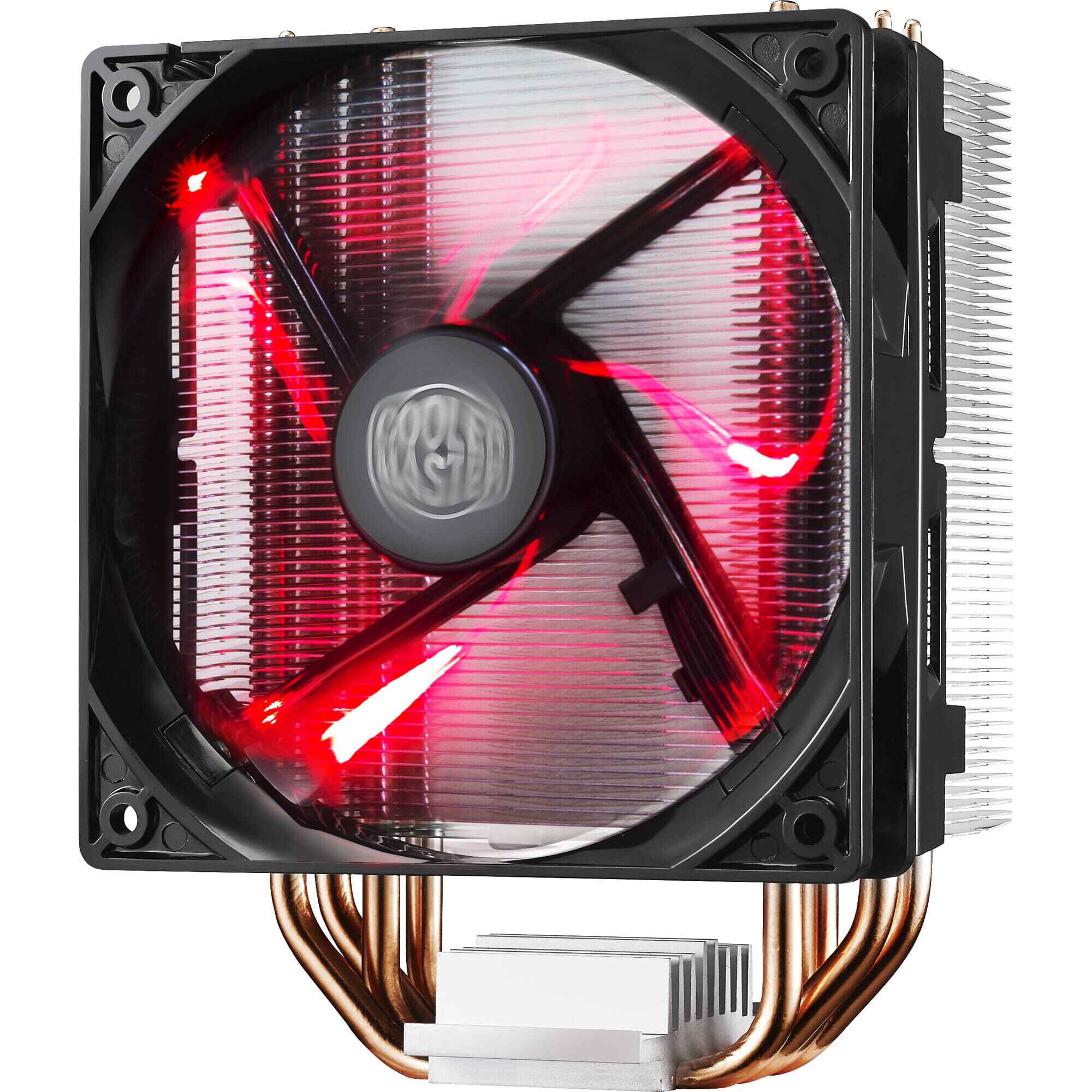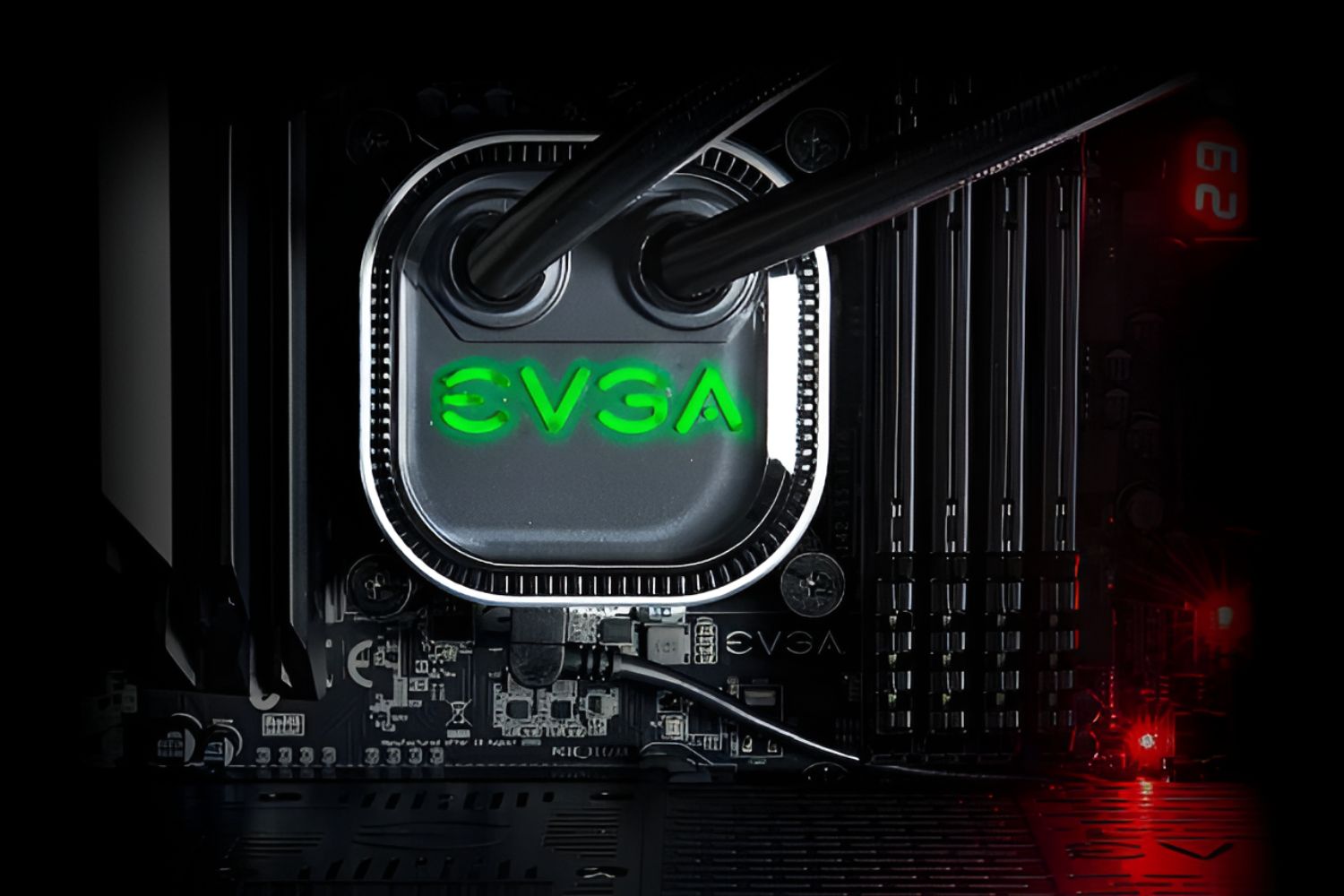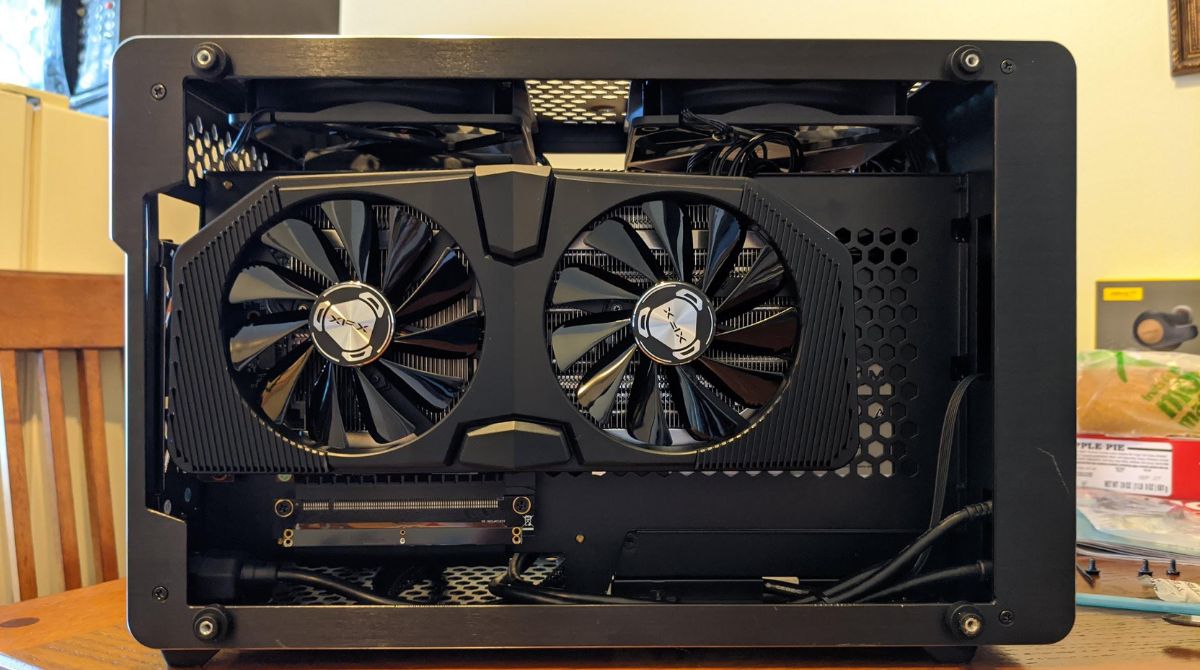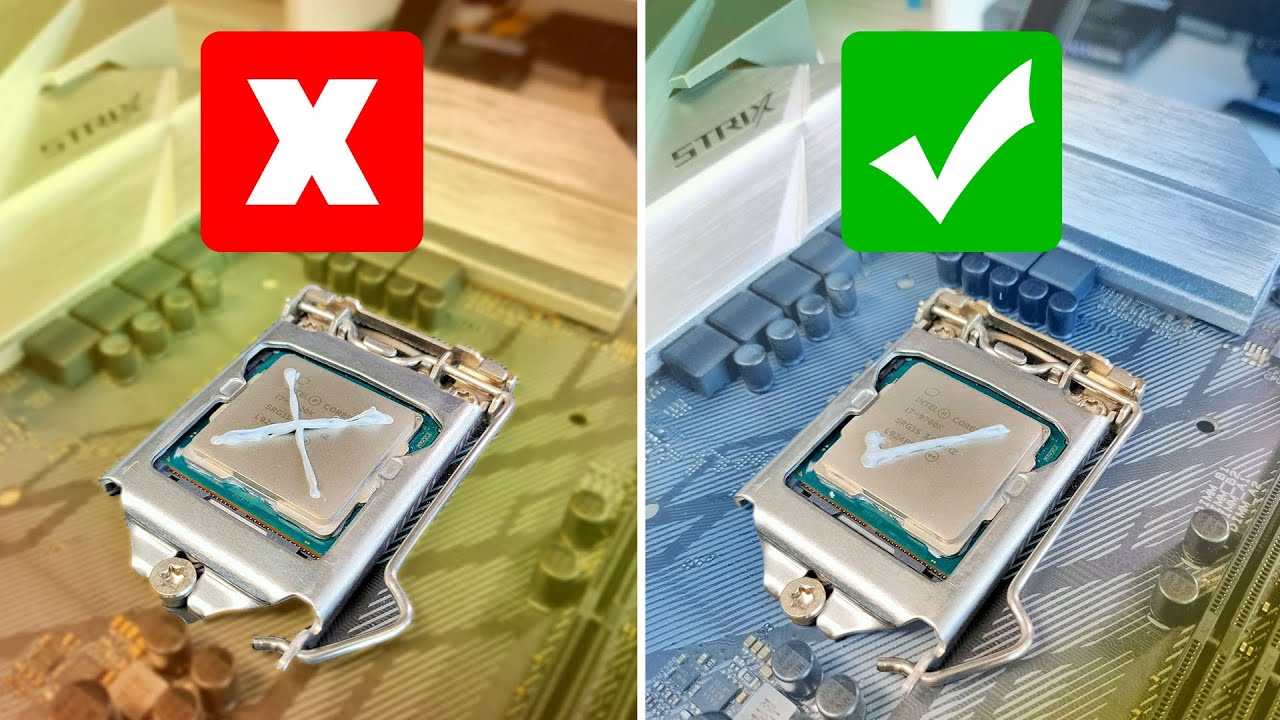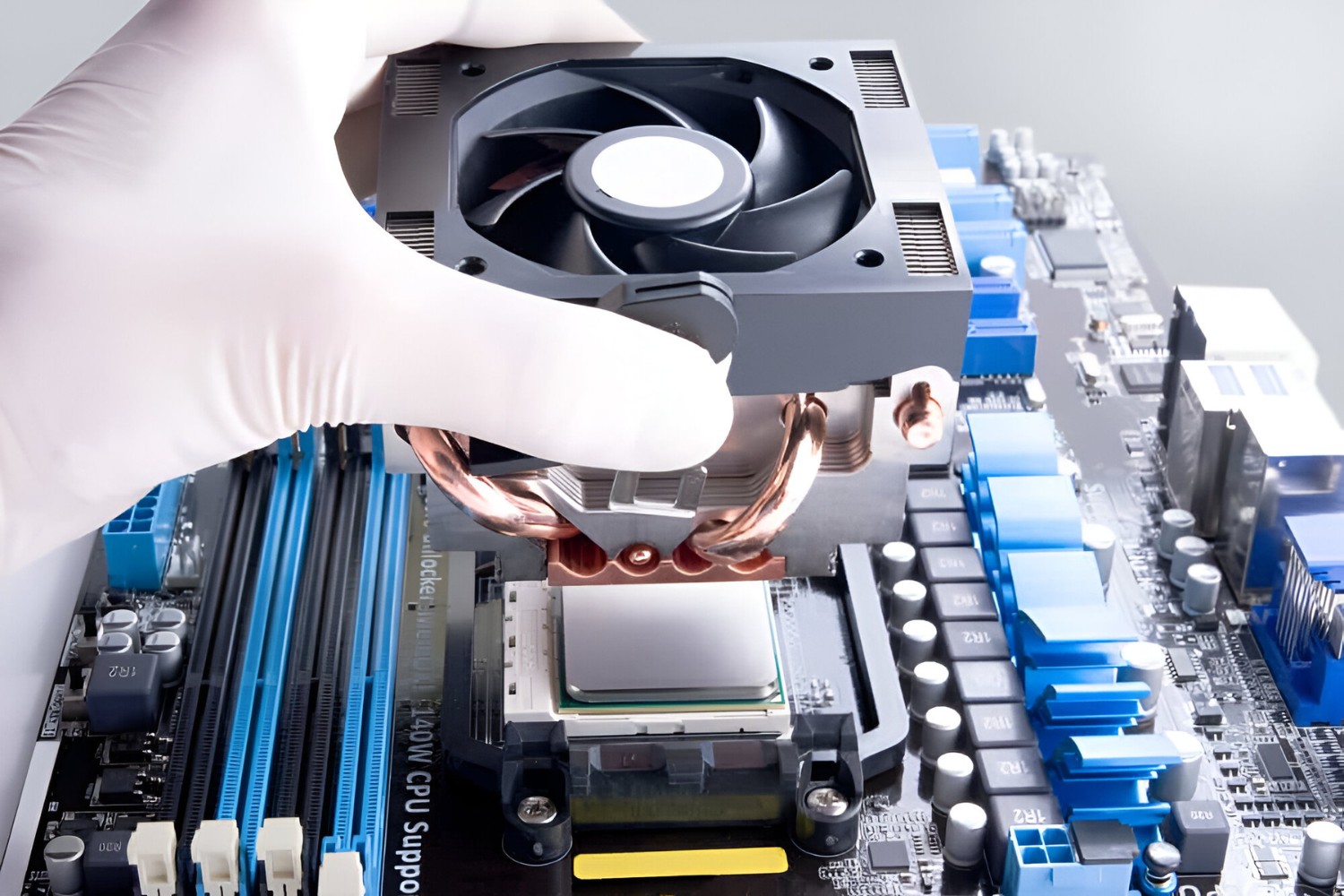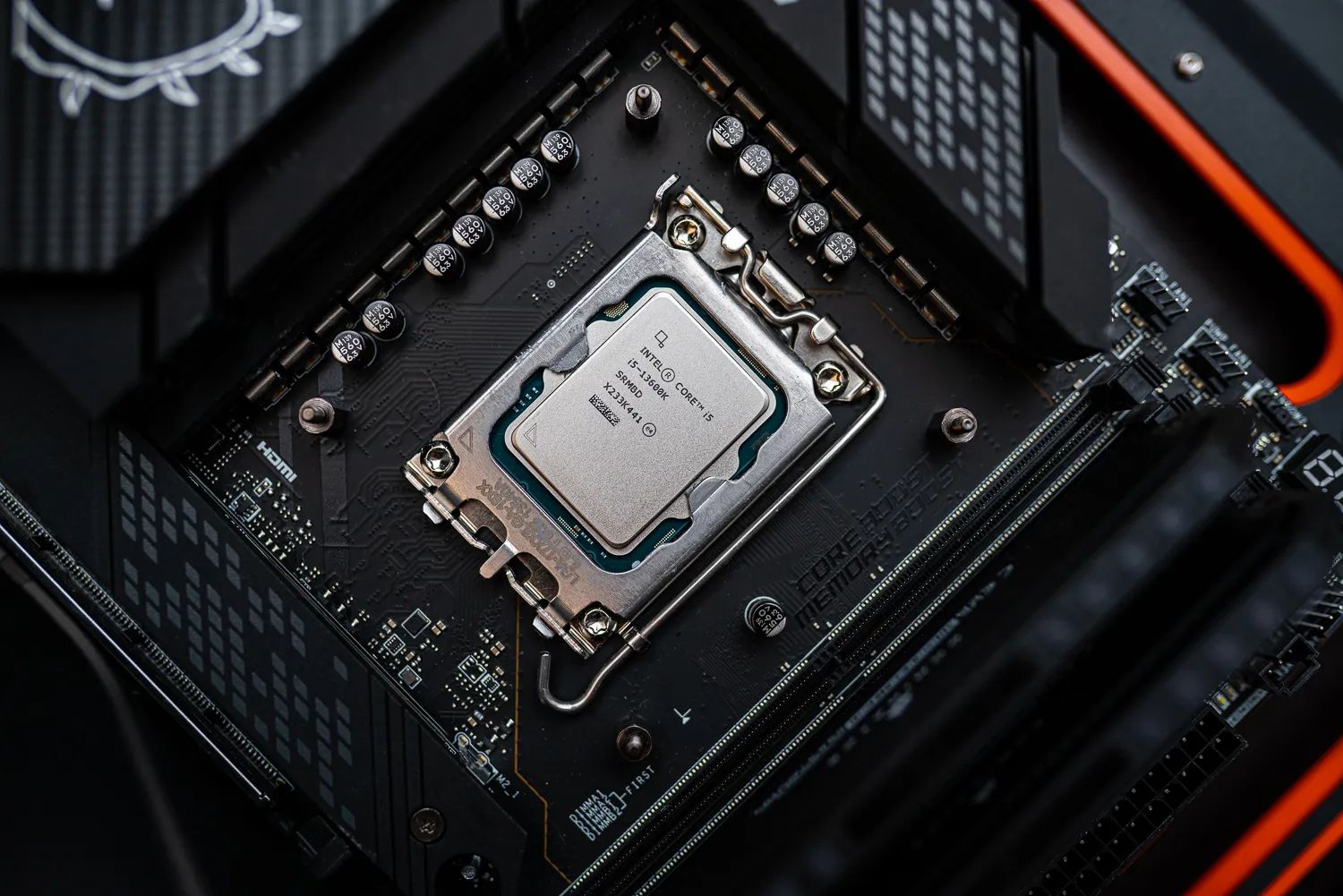Introduction
Welcome to our guide on how to determine the size of a CPU cooler! If you’re building or upgrading your computer, having a properly-sized CPU cooler is essential for keeping your processor running cool and efficient. But with so many options available, it can be overwhelming to figure out the right size for your specific setup.
Before we delve into the nitty-gritty of determining the size of your CPU cooler, let’s first clarify what a CPU cooler is and why its size is important. A CPU cooler is a device that helps dissipate the heat generated by your processor, ensuring that it stays within an optimal temperature range.
The size of a CPU cooler plays a crucial role in its effectiveness. If the cooler is too small, it may struggle to dissipate the heat adequately, leading to higher temperatures and potential performance issues. On the other hand, if the cooler is too large, it may not fit properly inside your computer case, limiting your options and causing compatibility issues.
In this guide, we will walk you through the steps to determine the proper size of your CPU cooler. We’ll cover various factors to consider, including your CPU socket type, the dimensions of your case, height clearance requirements, and compatibility with your motherboard and RAM. By the end of this guide, you’ll have all the information you need to choose the perfect CPU cooler for your system.
So, whether you’re a beginner in the world of PC building or a seasoned enthusiast looking for the best cooling solution, let’s dive into the process of determining the size of your CPU cooler and ensure that your system stays cool under pressure!
What is a CPU Cooler?
A CPU cooler, also known as a heatsink and fan (HSF) or heat pipe cooler, is a crucial component of a computer system that helps manage the heat generated by the central processing unit (CPU). When your CPU is operating, it generates a significant amount of heat, and if left unchecked, this heat can damage the processor and hinder its performance.
The role of a CPU cooler is to dissipate the heat produced by the CPU and maintain its temperature within a safe range. It consists of two main components: the heatsink and the fan. The heatsink is a block of metal, usually made of aluminum or copper, which absorbs and spreads the heat away from the CPU. The fan, on the other hand, assists in the heat dissipation process by blowing cool air over the heatsink, speeding up the heat transfer to the surrounding environment.
There are several types of CPU coolers available on the market, including air coolers and liquid coolers. Air coolers, as the name suggests, use fans to cool the heatsink and are the most common and affordable type. Liquid coolers, on the other hand, use a closed-loop system that circulates liquid coolant through tubes connected to a radiator, which dissipates the heat more efficiently, albeit at a higher cost.
Having an effective CPU cooler is essential for maintaining the longevity and performance of your CPU. Excessive heat can cause the CPU to throttle, leading to reduced processing power. Moreover, prolonged exposure to high temperatures can degrade the CPU over time, potentially causing permanent damage.
It’s important to note that different CPUs have different heat output levels, which is measured in terms of thermal design power (TDP). Higher TDP CPUs generate more heat and require more powerful CPU coolers to keep them running optimally. Therefore, it’s crucial to choose a CPU cooler that is capable of handling the specific thermal requirements of your CPU.
In the following sections, we’ll explore why the size of a CPU cooler is important and how you can determine the right size for your system.
Why is the Size of a CPU Cooler Important?
The size of a CPU cooler plays a significant role in its effectiveness and compatibility within your computer system. Here are a few key reasons why size matters when it comes to choosing the right CPU cooler:
Heat Dissipation Efficiency: The primary function of a CPU cooler is to dissipate the heat generated by the processor. A larger cooler typically provides a larger surface area for heat transfer, allowing for more efficient cooling. A cooler that is too small may struggle to handle the heat output of the CPU, resulting in higher temperatures and potential overheating issues.
Compatibility with Your Computer Case: CPU coolers come in various shapes and sizes, and it’s crucial to ensure that the cooler you choose fits properly inside your computer case. If the cooler is too large, it may not fit within the available space, obstruct other components, or make assembly difficult. In contrast, a cooler that is too small may leave unused space, which can impact the overall cooling performance.
CPU Socket Compatibility: The CPU cooler must be compatible with the specific socket type of your processor. Different CPUs have different socket types, such as Intel’s LGA and AMD’s AM4. Each socket type has its own mounting mechanism and spacing requirements. Choosing a cooler with the correct socket compatibility ensures a secure fit and optimal heat transfer.
Height Clearance: Another crucial factor to consider is the height clearance inside your computer case. Some cases have limited space between the CPU and the side panel, making it necessary to choose a cooler with a lower profile. If the cooler is too tall, it may not fit within the case or cause clearance issues with RAM modules or other components.
Noise Level: The size of the CPU cooler can also impact the noise level of your system. Larger coolers often come with larger fans, which can spin at lower RPMs while providing the same level of cooling. This results in quieter operation compared to smaller coolers where the fans might need to spin at higher RPMs to achieve the same cooling performance.
Considering these factors is crucial to ensure that your CPU cooler fits properly, performs optimally, and maintains the longevity and reliability of your system. In the next section, we will discuss the step-by-step process of determining the size of your CPU cooler.
How to Determine the Size of Your CPU Cooler
Choosing the right size CPU cooler for your system requires careful consideration of several factors. By following these steps, you can confidently determine the size of CPU cooler that will best suit your needs:
- Check your CPU socket type: Start by identifying the socket type of your CPU. This information can usually be found in the specifications of your processor or motherboard. The socket type will help you narrow down the compatible coolers.
- Measure the dimensions of your case: Take measurements of the available space in your computer case where the CPU cooler will be installed. Consider the height, width, and depth to ensure the cooler will fit without obstructing other components or the side panel.
- Consider the height clearance for your cooler: Measure the distance between your CPU socket and the side panel of your case. This will determine the maximum height clearance for the CPU cooler. Ensure that the cooler you choose fits comfortably within this clearance to avoid any compatibility issues.
- Evaluate your cooling needs: Consider your specific cooling requirements. If you have a high-performance CPU or plan to overclock, you may need a larger cooler with a higher cooling capacity. Conversely, if you have a lower-power CPU or don’t have demanding cooling needs, a smaller cooler may suffice.
- Review compatibility with motherboard and RAM: Check for any potential compatibility issues with your motherboard and RAM modules. Some larger CPU coolers may obstruct RAM slots or interfere with nearby components. Ensure that the cooler you choose leaves enough space for other components to fit properly.
By following these steps, you can determine the appropriate size for your CPU cooler, ensuring compatibility, efficient cooling performance, and an overall smooth installation process.
Remember that each system is unique, and it’s important to take into account the specific requirements and limitations of your setup. Additionally, consulting the manufacturer’s specifications and user reviews can provide valuable insights into the compatibility and performance of different CPU coolers.
Now that you understand how to determine the size of your CPU cooler, you’re equipped to make an informed decision that will keep your CPU cool and your system running smoothly!
Check your CPU socket type
The first step in determining the size of your CPU cooler is to identify the socket type of your CPU. The socket type refers to the physical design of the CPU socket on your motherboard, and it determines the compatibility between the CPU and the cooler.
To find out your CPU socket type, you can check the documentation or specifications of your processor or motherboard. The socket type is usually indicated by a series of letters and numbers, such as “LGA1151” for Intel processors or “AM4” for AMD processors.
Once you know the socket type, you can look for CPU coolers that are specifically designed for that socket. Most CPU cooler manufacturers provide compatibility lists on their websites, which outline the supported socket types for each model. Alternatively, you can consult online PC building forums or use compatibility tools provided by hardware retailers to find compatible CPU coolers.
It’s important to ensure that the cooler you choose is explicitly listed as compatible with your CPU socket type. It’s not advisable to use a cooler that is not designed for your specific socket type, as it may not fit properly or provide adequate cooling performance.
By checking your CPU socket type and selecting a cooler that is compatible with it, you can ensure a proper fit and optimal performance for your CPU cooling solution.
Example: If you have an Intel processor with an LGA1151 socket, make sure to choose a CPU cooler that explicitly mentions support for the LGA1151 socket type.
Measure the dimensions of your case
After determining the compatible CPU socket type for your cooler, the next step is to measure the dimensions of your computer case. This step is crucial to ensure that the CPU cooler you choose fits properly within your case and does not interfere with other components.
When measuring the dimensions of your case, there are a few key factors to consider:
- Height: Measure the maximum height available for the CPU cooler, taking into account any clearance restrictions posed by the side panel of the case. The height clearance will determine the maximum height that the CPU cooler can be to fit comfortably.
- Width and Depth: Measure the width and depth of the area where the CPU cooler will be installed. This will help you ensure that the cooler does not extend beyond the available space or obstruct other components such as RAM modules or PCIe slots.
It’s important to note that different cases have varying levels of clearance for CPU coolers. Some cases are specifically designed to accommodate larger coolers, while others have space limitations due to a more compact form factor. Be sure to consult your case’s specifications or manual to understand the clearance dimensions it supports.
When choosing a CPU cooler, compare its dimensions to the measurements you’ve taken for your case. Ensure that the cooler can comfortably fit within the available space without any compatibility issues. If you are unsure about the compatibility, you can also consult online forums or contact the manufacturer for additional guidance.
Successful measurement of your case’s dimensions will help you make an informed decision and choose a CPU cooler that fits seamlessly inside your computer case, providing efficient cooling performance and avoiding any potential conflicts with other components.
Example: If your case has a maximum CPU cooler height of 160mm, make sure to choose a cooler that is below this height to ensure a proper fit.
Consider the height clearance for your cooler
When choosing a CPU cooler, it’s important to consider the height clearance available in your computer case. The height clearance refers to the vertical space between the CPU socket and the side panel of your case. This measurement determines the maximum height that your CPU cooler can be to fit comfortably.
Exceeding the height clearance can lead to compatibility issues, preventing the side panel from closing properly or causing interference with other components such as RAM modules or even the motherboard itself. It’s essential to ensure that the CPU cooler you choose fits within the height clearance limitations of your case.
To determine the height clearance, measure the distance between the top surface of your CPU socket and the side panel of your case. This measurement accounts for any protrusions on the motherboard, such as VRM heatsinks.
When selecting a CPU cooler, pay close attention to the height specifications provided by the manufacturer. This information can usually be found on the product’s specifications page or in the user manual. Ensure that the cooler’s height is less than the measured height clearance to allow for proper installation and clearance of other components.
It’s worth noting that some CPU coolers come with various height options or adjustable designs to accommodate different case layouts and height clearances. These coolers often provide flexibility in terms of installation and compatibility. If you have limited height clearance, consider choosing a low-profile cooler specifically designed for compact cases.
By considering the height clearance for your CPU cooler, you can ensure a proper fit within your computer case, preventing any potential compatibility issues and allowing for optimal cooling performance.
Example: If you measure a height clearance of 160mm in your case, make sure to choose a CPU cooler with a maximum height of 150mm or less to provide adequate clearance.
Evaluate your cooling needs
When determining the size of your CPU cooler, it’s essential to evaluate your specific cooling needs. Understanding your cooling requirements can help you choose a cooler with the right level of performance to keep your CPU running at optimal temperatures.
Consider the following factors when evaluating your cooling needs:
- CPU Power and TDP: The thermal design power (TDP) of your CPU indicates the amount of heat generated during operation. CPUs with higher TDPs typically require more robust cooling solutions to keep temperatures in check. If you have a high-performance or overclocked CPU, you may need a larger, more powerful cooler to handle the increased heat output.
- Environmental Factors: Take into account the ambient temperature and the airflow within your case. If you live in a warm climate or have limited airflow in your case, you may need a more efficient cooler with a higher cooling capacity.
- Overclocking: If you plan to overclock your CPU, which involves increasing its frequency and voltage for performance gains, you will produce more heat. Overclocking typically requires a better cooling solution to dissipate the increased heat effectively.
- Noise Level: Consider your preference for noise levels. Some coolers operate at a higher fan speed, resulting in more significant noise generation. If a silent or quiet operation is important to you, choose a cooler that strikes a balance between cooling performance and noise output.
Understanding your cooling needs will help you determine the appropriate size of a CPU cooler. If you have demanding cooling requirements, opt for a larger cooler that offers better heat dissipation. If you have a lower-power CPU or less demanding cooling needs, a smaller cooler may suffice, providing a cost-effective solution.
Additionally, reading customer reviews and consulting benchmark tests can give you insights into the cooling performance and noise levels of specific CPU coolers. This information can help you identify coolers that align with your cooling requirements.
By evaluating your cooling needs, you can choose a CPU cooler that provides the necessary cooling capacity and maintains your CPU’s temperatures within safe limits.
Example: If you have a high-performance CPU with a high TDP and plan to overclock, you should select a larger CPU cooler with excellent heat dissipation capabilities to ensure efficient cooling and optimal performance.
Review compatibility with motherboard and RAM
Compatibility with your motherboard and RAM is another crucial aspect to consider when determining the size of your CPU cooler. Ensuring compatibility will help you avoid any issues related to space constraints and interference with other components.
When reviewing compatibility, consider the following factors:
- Motherboard Layout: Some CPU coolers may interfere with specific motherboard components such as VRM heatsinks or tall capacitors. Check the layout of your motherboard and ensure that the CPU cooler you choose does not obstruct or come into contact with these components. Refer to the manufacturer’s specifications or user manual for information regarding potential clearance issues.
- RAM Clearance: Larger CPU coolers can sometimes overlap with RAM modules, especially those with tall heatsinks. This overlap can prevent the installation of certain RAM modules or necessitate the removal of heatspreaders. Check the clearance provided by the CPU cooler to ensure compatibility with your RAM modules, especially if you have modules with taller heatsinks.
- Fan Placement: Consider the placement of fans on the CPU cooler and how they may interact with nearby components. Ensure there is enough space for the fans to spin freely without interfering with RAM modules, PCIe slots, or other components on the motherboard.
- Overall Compatibility: It’s a good practice to consult the manufacturer’s website or compatibility charts to verify that the CPU cooler you are considering is compatible with your specific motherboard model. This step will help you avoid any potential issues related to mounting mechanisms or socket compatibility.
By reviewing the compatibility of your CPU cooler with your motherboard and RAM, you can ensure that there are no physical or functional conflicts between the components. This will enable a smooth installation process and ensure optimal performance of your entire system.
It’s worth noting that some CPU coolers come with adjustable fan heights or adaptable mounting brackets to provide flexibility and improved compatibility with various motherboard layouts and RAM configurations. These features can be beneficial in case you have specific compatibility concerns.
Take the time to research and verify compatibility before purchasing a CPU cooler to avoid any surprises or compatibility issues during installation.
Example: If you have tall RAM modules with bulky heatsinks, ensure that the CPU cooler you choose has sufficient clearance to allow for proper installation and airflow without obstructing the RAM modules.
Conclusion
Determining the size of a CPU cooler is an essential step in ensuring effective cooling and compatibility within your computer system. By following the steps outlined in this guide, you can confidently choose the right CPU cooler for your needs.
First, check your CPU socket type to ensure compatibility between the CPU and cooler. Measure the dimensions of your case to determine the available space for the cooler. Consider the height clearance, ensuring the cooler fits comfortably within the case without obstructing other components.
Evaluate your cooling needs, taking into account factors such as CPU power, environmental conditions, and desired noise levels. Finally, review compatibility with your motherboard and RAM, ensuring no conflicts arise during installation.
By considering these factors, you can make an informed decision when choosing a CPU cooler that provides optimal cooling performance while fitting seamlessly within your system.
Remember to consult the specifications provided by the CPU cooler manufacturer and verify compatibility with your specific CPU socket, case dimensions, and motherboard layout. Additionally, reading user reviews and seeking advice from online communities can provide valuable insights into the performance and compatibility of different CPU coolers.
With the right size CPU cooler, you can keep your processor running at optimal temperatures, ensuring its longevity and performance. Whether you’re a dedicated PC enthusiast or a casual user, the proper CPU cooler will contribute to a smoother and more reliable computing experience.
So, take the time to consider your requirements, conduct thorough research, and select a CPU cooler that meets your needs. With a well-sized and compatible CPU cooler, you can keep your system running smoothly, even during demanding tasks and intense gaming sessions.







